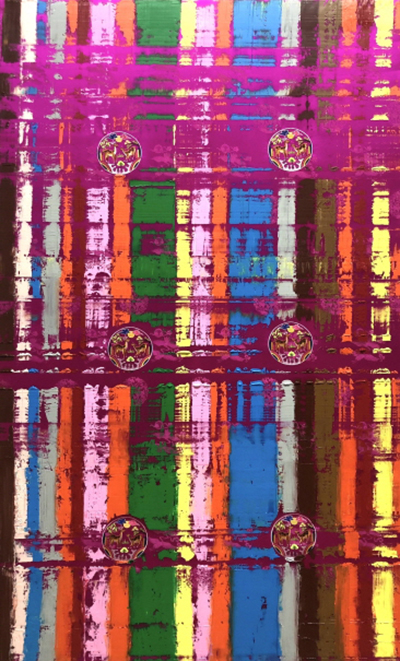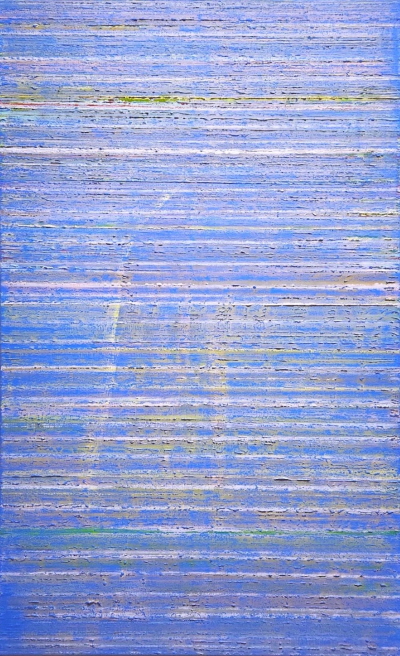장바구니에 담긴 작품이 없습니다.
소식
News
Ukn Jaden Lee: Bridging Artistic Boundaries with ’13 Seasons’
A Fusion of East and West, Abstract and Figurative, in the Face of Pandemic Reflection
The exhibition “13th season_Reflective Emotions” by artist “Ukn Jaden Lee,” who is receiving international attention for his unique intellectual art that penetrates the East and West, will be held at Caaggallery, 416 Apgujeong-ro, Gangnam-gu, Seoul, Korea, from October 2 to 27, 2023. The official event for this exhibition will be held here on Friday, October 6th at 3pm.
“4 x 3 + 1 equals 13 seasons. I took a hiatus from my figurative painting, a pursuit I’ve dedicated over 20 years to. My creation, ’13 Seasons,’ serves as a conceptualization of the coronavirus pandemic, a historic event that shook and deeply affected humanity. Initially, I approached this work casually, considering it a short-term performance. However, over time, I began to recognize the significance of these pieces in the trajectory of my artistic journey. I intricately depicted all the surreal scenarios from these works on traditional Korean hanbok fabric. In the future, I plan to merge this abstract approach with the figurative paintings that have been my hallmark. It represents an exciting new challenge for me as an artist. I hope that my artworks will serve as a positive beacon, helping everyone overcome the three years of tragedy and embark on a fresh start,” the artist explained regarding this exhibition”
“Ukn Jaden Lee” pursued his major in painting at “Braunschweig State University” in Germany, establishing himself as an internationally acclaimed artist and regarded as the foremost pupil of the globally renowned master, Norbert Thaddeus. What sets him apart is his distinct artistic perspective, cultivated through his creative journey between Seoul and Berlin. His works serve as repositories for memories, much like a living organism, and he elucidates, “My creations are perpetual works that evolve alongside me.” This explanation could be seen as a kind of artistic punctuation, allowing the audience’s interpretation to bring closure to his pieces.
Lee’s artistic approach distinguishes him from other painters. In his works, viewers can discern layers of expression interwoven through a continuous philosophical exploration and the utilization of the oil painting technique on hanbok fabric, a practice introduced in Europe over two decades ago. From an academic standpoint, his method could be regarded as a truly unique exemplar in Western art history. His singularity possesses a compelling ability to captivate the audience, owed in part to his art’s ability to bridge both Western and Eastern sensibilities. His oeuvre should be appreciated as an extraordinarily distinct style, occasionally rooted in specific forms while at other times evoking an abstract and surreal sensibility.
He is presently being curated by Michael Stoeber, an internationally acclaimed critic known for his critiques of the works of Georg Baselitz and Jorg Immendorff, both regarded as Germany’s preeminent contemporary artists.
The following article is the full text of Michael Stoeber’s article about “Ukn Jaden Lee.”
Power Stations of Feeling On the Abstract Paintings of Ukn Jaden Lee
By Michael Stoeber
Ukn Lee wants to make a point. Having overcome the pandemic and reached the age of 60, he is planning something new for the next decades. The visible sign of this is the expansion of his name. Ukn Lee has become Ukn Jaden Lee! And since for this artist art and life form a symbiotic unity, this new beginning manifests itself for him primarily in his art. Those who know his previous work know that the painter Ukn Lee worked figuratively for many years. At the same time, his work did not pursue a singular signature, but a multitude of different forms of expression. Ukn Lee painted neo-objectively and austerely, but also playfully and surrealistically or expressively in such a way that many viewers of his works wanted to recognise a neo-expressionist in him. With every attempt to define him, he was already on his way to a new painterly handwriting. What united all these different ways of painting, despite their specific differences, are the narratives they negotiate. Grosso modo, they are always concerned with the identity of their protagonists. With a “Nosce te ipsum” in the Platonic Socratic sense. With self-knowledge and self-empowerment. With answering the question: Who are we when we say I?
This has fundamentally changed in his new paintings à première vue. In them, no recognisable objects and narratives are depicted and negotiated. Instead, the subject of his painting is painting itself. A self-referential play of colors and forms, the depiction of autonomous abstractions, a pure L’art pour l’art. As if the artist Ukn Jaden Lee wanted to follow the programme of Wassily Kandinsky, who proclaimed the “great abstract”in painting more than a hundred years ago. As Kandinsky saw it, the future belonged to the abstract.While the “great concrete”, i.e. all representational painting, was the object of the past. Ukn Jaden Lee’s series of paintings “13th Season” emphasises his new beginning as a painter. Its title refers to the time that has passed from the beginning of the Corona Crisis until today, and at the same time marks the entry of abstraction into his work. This is also the case when painting titles make references to colours (“Green”) and abstractions (“Abstract”). In addition, other titles (“Angel”, “Mountain”, “Sea” or “Wind”) call up subjects that the artist has already addressed in his representational painting. This makes it clear that the narratives have by no means emigrated from Ukn Jaden Lee’s abstract painting. They are merely subject to camouflage.
Because the pictorial quality of representational painting no longer did justice to the current emotional world of the artist Ukn Jaden Lees, he resorted to abstraction. Following an inner urge to which he was led by the upheavals of the Corona pandemic, which were marked by pain and separation,isolation and death. At the same time,however, he was also driven by a fierce longing for human closeness and communication, for encounter and embrace, love and tenderness. It is precisely this ambivalence that the artist seeks to express in his abstract paintings. Through the torn, brittle structures that his wooden squeegee leaves behind on picture grounds made of cotton or silk. And which, despite their lesions, shine in the most beautiful, solemn colourfulness. In them shimmers the longing for an order that, as the compositions suggest,no longer holds anything together. Their world is out of joint, something Shakespeare’s disillusioned Danish prince “Hamlet” has been whispering to us for centuries. The art historian Wilhelm Worringer suspected very early on in his essay “Abstraction and Empathy” that abstract forms and colours are more than free-floating painting. There it says: “The tendency towards abstraction is the consequence of a deep insecurity of man in the face of the world.”
Just how right he was to be is vividly demonstrated by the “Birkenau” pictures that Gerhard Richter painted a few years ago. A political work for which the artist was inspired by photographs secretly taken by a prisoner of the Jewish Sonderkommando in the Auschwitz-Birkenau concentration camp in 1944. They show the burning of corpses of murdered Jews in a wooded area as well as naked women on their way to the gas chamber. Richter, who was deeply shaken by these photos, initially approached the subject in a photo-realistic manner. Just as he had painted similar motifs from the National Socialist era in the 1960s. Only to find, after finishing his four paintings, that they in no way did justice to what he had felt when looking at the photos. Whereupon Richter painted over the figurative pictures with the colours black, grey, green and red and worked them further with a squeegee. Until they became for him a memorial that gave appropriate expression to his deep grief in the face of the crimes of the Nazi state. Here, too, the refusal of direct depiction resulted in a process of abstraction in which a narrative is nonetheless suspended. Darker and more dignified than any pictorial realism.
The feelings of loneliness and forlornness that afflicted Ukn Jaden Lee during the Corona Pandemic cannot, of course, be compared with the existential shock that Gerhard Richter felt in the face of the Holocaust. But they do converge on one important point for the aesthetic work. In the conviction that the artistic representation of emotions is better served in the medium of abstraction than in their figurative processing. Why is that? Because abstraction creates a space that vibrates with impressions and moods. Very different viewers and their experiences can find themselves in them. Precisely because abstractions operate more with suggestions than with certainties. Because they suggest rather than describe. Precisely because of this, their pictures are also able to affect and animate the thoughts and feelings of the viewer. In this they are comparable to music, which is by definition the most abstract of all arts. And a powerhouse of feeling. “Vissi d’arte, vissi d`amore”, as it says in Giacomo Puccini’s opera “Tosca”. Ukn Jaden Lee’s abstract paintings are similarly jubilant. Radiant in adversity, victorious in defeat. On the way to the stars. Per aspera ad astra.
Sayart.net
Maria Kim sayart2022@gmail.com
출처 : Ukn Jaden Lee: Bridging Artistic Boundaries with ′13 Seasons′ (sayart.net)





